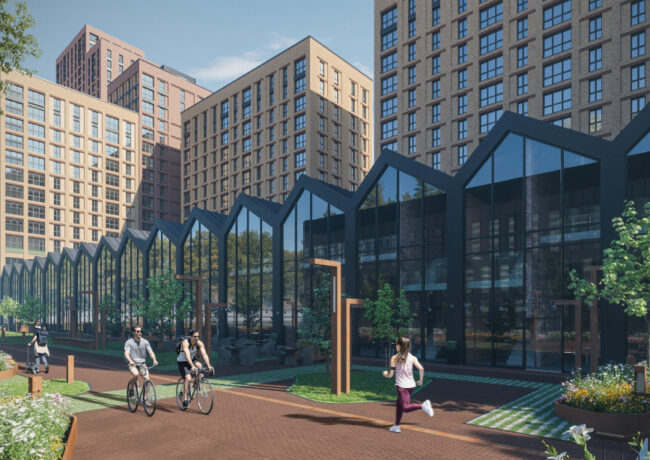Commentary
COMMENT | Govt’s levelling up aim ‘not yet visible’
 After a lost economic decade and the turbulence of Brexit and Covid, shouldn’t we at least be able to see the destination and path we may take towards the Prime Minister’s much-lauded vision, asks Christian Spence of MMU.
After a lost economic decade and the turbulence of Brexit and Covid, shouldn’t we at least be able to see the destination and path we may take towards the Prime Minister’s much-lauded vision, asks Christian Spence of MMU.
The Budget this year was expected to be a big one. It would underline the scale of fiscal support that the government has delivered to individuals and businesses across the UK, lay bare the damage to public finances this response has caused, and set out the longer-term economic vision. There’s a thread of narrative through each of these stages but, like balls of wool, threads have a habit of unravelling.
The £352bn of interventions to mitigate the worst effects of the crisis have, sensibly, been extended. This Budget is Chancellor Rishi Sunak’s 17th statement on coronavirus policy, and the latest announcements are likely to last some time. Continuing economic support well beyond the end of the Prime Minister’s roadmap for reopening is a wise one; the Government has been caught out too many times in the past year by trying to forcibly reopen the economy and taper back support before being forced to backtrack.
Almost all the schemes – furlough, business loans, business rates discounts, VAT reductions and more – have been extended into the autumn and beyond. This is a welcome acknowledgement that the economy is unlikely to be in full health by September, even if it’s got its colour back.
Recovery of the public finances is mostly to be driven by reversing many of the tax reforms delivered earlier in this Government when George Osborne was chancellor. The headline rate of corporation tax, to be increased to 25%, is less important to many businesses than the base of the tax and the reliefs that can be claimed. The UK has been less generous than many other nations in this regard, but the introduction of a 130% super deduction for two years looks good, even though its long-term effectiveness is questionable. Individuals will contribute, too, to closing the deficit, with former PM David Cameron’s ambitious plans to raise personal allowances now frozen until well into the next parliament.
Yet the desire to repair the Government accounts doesn’t stop the giveaways. The extension of higher thresholds for stamp duty land tax and the Government – again – supporting first-time buyers by guaranteeing 95% mortgages will provide stimulus in the short term but increase the problems it is trying to solve over the longer term by keeping an upward pressure on house prices. The chancellor’s stated aims – to “go long” and deliver the foundations of green growth – seem to be challenged by the freezing, for the 11th year, of fuel duty.
Here we start to see the tensions in this Budget statement and, more widely, in the Government’s vision. Nearly two years since coming to power, Prime Minister Boris Johnson’s vision – to take back control and ‘level up’ the regions – isn’t yet visible. Covid-19 plays a large part of course (that really isn’t his fault), but the lack of a clearer strategy to outline the “why” of this vision, and more importantly the “how” it will be delivered felt like an omission 12 months ago and is more critical still today.
The short-term responses in this Budget to extend the emergency policies and not worry about the costs, at least for now, are the right ones. But where is the thinking for the longer term? The six-month extension of the £20 per week uplift for Universal Credit (and therefore the date for its removal) will surely only cause more political pain for the Government in the autumn. If it can’t see beyond a horizon in September, what hope is there for those challenges that, unlike Covid-19, will be here for decades to come?
If the Government feels that its mantra to take back control has now been delivered, then to level-up has barely started. Claims to unleash the potential of the regions are wrapped heavily in Johnsonian rhetoric, but there’s little to see in tangible terms, at least at the scale necessary to meet the challenge.
There’s money for the North West in the Towns Fund and the not-yet-launched Levelling-Up Fund, Community Renewal Fund and the Community Ownership Fund, but these are heavily weighted to capital programmes and are pitifully small compared to the challenge.
Levelling-up – if taken seriously – is a project that will take decades and hundreds of billions of pounds. We couldn’t expect to see all of that in a single budget but, after a lost economic decade and the turbulence of Brexit and Covid, shouldn’t we at least be able to see the destination and the path we may take towards it?
The path of recovery from here is far from clear and the chancellor will be back at the despatch box in the autumn where he must set out the longer-term spending plans. He has shown his deftness in dealing with a crisis; can he now set-out the path for the long-term goal?
Christian Spence is reader in economic analytics and head of future economies analytics at Manchester Metropolitan University





Perhaps this government are deliberately ambiguous as to what their Levelling up agenda represents. Northern Leaders such as Andy Burnham will talk about levelling up the North and South divide, however grants aimed at Towns especially those with new Conservative Party MP’s suggest that their aim is to seek investment in the satellite towns left behind whilst the centres of our large City’s were seeing relative growth. Sadly for the towns I am not sure that the tens of millions being distributed are any more than political bribes to the new Conservative voters and will have little effect on either the North south Divide or the Northern Town City Divide.
By Graham Brandwood
It’s no coincidence that 40 of the 45 towns have a Tory MP
By Disgruntled Goat